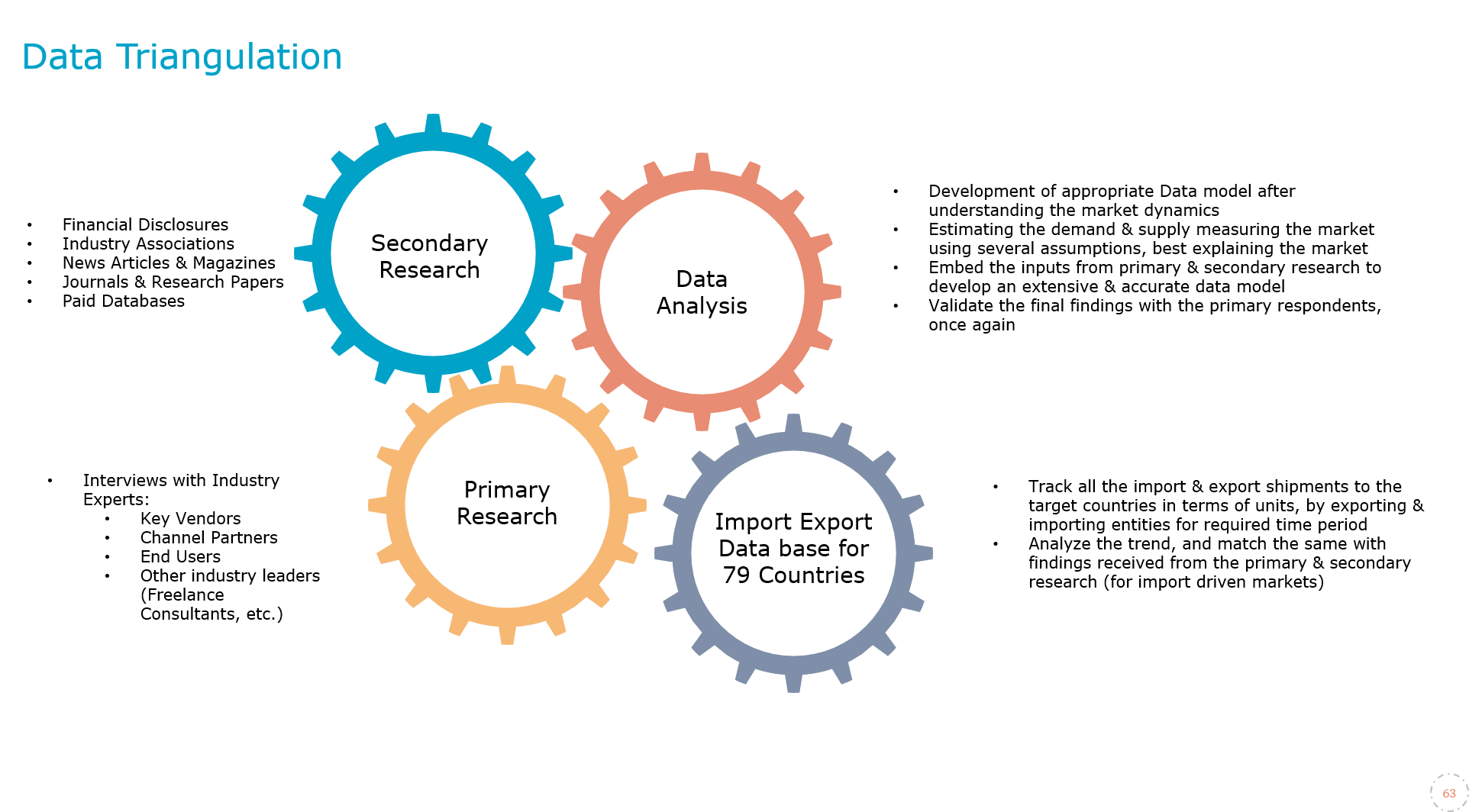
By Type (Colorants & Auxiliaries, Coating & Sizing Agents, Finishing Agents, Surfactants, Desizing Agents, Others), By Application (Apparels, Home Textile, Technical Textile), By F......iber (Natural Fiber, Synthetic Fiber), By Region (North, South, West, East, Central) By Company (Archroma India Pvt. Ltd., Croda, Huntsman International, Rossari Biotech Ltd., CHT India Pvt. Ltd., Kiri Industries, Bodal Chemicals, Indofil Industries, Fibro Organic, Jaysynth Dyestuff, Others) Read more
- Chemicals
- May 2025
- 120
- PDF, Excel, PPT
Market Definition
At various stages of the manufacturing process, from fiber pre-treatment to textile finishing, textile chemicals are utilized to treat textile material. There are several steps in producing textile chemicals, such as washing, scouring, mercerizing, dyeing, printing, and finishing.
Market Insights & Analysis: India Textile Chemicals Market (2025-30):
The India Textile Chemicals Market size was valued at around USD 1,449.19 million in 2024 and is projected to reach USD 2,232.12 million by 2030. Along with this, the market is estimated to grow at a CAGR of around 7.16% during the forecast period, i.e., 2025-30.
A robust domestic consumption and export growth coupled with an increase in import substitution drive the market across various end-user industries. Additionally, with the advent and expansion of industries in India, the demand for Technical Textiles has been on the rise. Technical textiles generally require high-performance chemicals such as auxiliaries to function efficiently, and the automotive industry being the major end-user, further facilitates the industry ascension. As such, the increasing production of vehicles in the automotive sector is anticipated to boost the demand for textile auxiliaries in the coming years.
| Report Coverage | Details |
|---|---|
| Historical Years | 2020–23 |
| Forecast Years | 2025–30 |
| Market Value in 2024 | USD 1,449.19 Million |
| Market Value by 2030 | USD 2,232.12 Million |
| CAGR (2025–30) | 7.16% |
| Top Key Players | Archroma India Pvt. Ltd., Croda, Huntsman International, Rossari Biotech Ltd., CHT India Pvt. Ltd., Kiri Industries, Bodal Chemicals, Indofil Industries, Fibro Organic, Jaysynth Dyestuff, Others |
| Segmentation | By Type (Colorants & Auxiliaries, Coating & Sizing Agents, Finishing Agents, Surfactants, Desizing Agents, Others), By Application (Apparels, Home Textile, Technical Textile), By Fiber (Natural Fiber, Synthetic Fiber), By Region (North, South, West, East, Central) By Company (Archroma India Pvt. Ltd., Croda, Huntsman International, Rossari Biotech Ltd., CHT India Pvt. Ltd., Kiri Industries, Bodal Chemicals, Indofil Industries, Fibro Organic, Jaysynth Dyestuff, Others) |
| Key Report Highlights |
|
*Boost strategic growth with in-depth market analysis - Get a free sample preview today!
On the other hand, due to the fragmented nature of the industry, The Apparel Industry in India needs more significant fabric makers compared with major fabric producers like China and USA. Besides, inadequate weaving units in the country emerge as lucrative prospects for the market players willing to set up such units. In fact, introducing innovative chemicals suiting various fabrics' needs seems opportunistic.
However, the ongoing fluctuations in crude oil prices and changing economic cycles remained challenging for cotton yarn and synthetic fiber manufacturers in maximizing their profit margins. It is primarily because synthetic textiles' raw materials are mainly derived from crude oil. These aspects pose risks to market growth in the coming years.
- Introduction
- Product Definition
- Research Process
- Assumptions
- Market Segmentation
- Executive Summary
- Expert Verbatim- What our Experts Say?
- Macro-Economic Indicators
- India Textile Chemicals Market Outlook, 2020-2030F
- Market Size & Analysis
- Market Revenues
- Quantity Sold
- Market Share & Analysis
- By Type
- Coating & Sizing Agents
- Colorants & Auxiliaries
- Finishing Agents
- Surfactants
- Desizing Agents
- Others
- By Application
- Apparel
- Home Textile
- Technical Textile
- By Fiber
- Natural Fiber
- Synthetic Fiber
- By Region
- North
- South
- East
- West
- Central
- By Company
- Competitor Wise Revenue Share
- Strategic Factorial Indexing
- Competitor Placement on MarkNtel Quadrant
- By Type
- Market Attractiveness Index
- By Type
- By Application
- By Fiber
- By Region
- Market Size & Analysis
- India Textile Coating & Sizing Agents Market Outlook, 2020-2030F
- Market Size & Analysis
- Market Revenues
- Quantity Sold
- Market Share & Analysis
- By Application
- By Fiber
- Market Attractiveness Index
- By Application
- By Fiber
- Market Size & Analysis
- India Textile Colorants & Auxiliaries Market Outlook, 2020-2030F
- Market Size & Analysis
- Market Revenues
- Quantity Sold
- Market Share & Analysis
- By Colorants Type
- Disperse
- Reactive
- VAT
- Direct
- Acid
- Basic
- Sulphur
- Others
- By Auxiliaries Process
- Finishing
- Pretreatment
- Dyeing and Printing
- By Application
- By Fiber
- By Colorants Type
- Market Attractiveness Index
- By Colorants Type
- By Auxiliaries Process
- By Application
- By Fiber
- Market Size & Analysis
- India Textile Finishing Agents Market Outlook, 2020-2030F
- Market Size & Analysis
- Market Revenues
- Quantity Sold
- Market Share & Analysis
- By Type
- Repellent and Release
- Flame Retardants
- Antimicrobial or Anti-inflammatory
- Other
- By Application
- By Fiber
- By Type
- Market Attractiveness Index
- By Type
- By Application
- By Fiber
- Market Size & Analysis
- India Textile Surfactants Market Outlook, 2020-2030F
- Market Size & Analysis
- Market Revenues
- Quantity Sold
- Market Share & Analysis
- By Type
- Cationic Surfactant
- Anionic Surfactant
- Nonionic Surfactant,
- Amphoteric Surfactant
- Others
- By Application
- By Fiber
- By Type
- Market Attractiveness Index
- By Type
- By Application
- By Fiber
- Market Size & Analysis
- India Textile Desizing Agents Market Outlook, 2020-2030F
- Market Size & Analysis
- Market Revenues
- Quantity Sold
- Market Share & Analysis
- By Application
- By Fiber
- Market Attractiveness Index
- By Application
- By Fiber
- Market Size & Analysis
- Policy & Regulatory Landscape
- India Chemical Textile Market Trends & Insights
- India Chemical Textile Market Dynamics
- Impact Analysis
- Drivers
- Challenges
- India Chemical Textile Imports Exports Statistics
- Competitive Benchmarking
- Competition Matrix
- Product Portfolio
- Target Markets
- Target End Users
- After Sale Service
- Strategic Alliances
- Company Profiles (Business Description, Product Offering, Strategic Alliances or Partnerships, etc.)
- Archroma India Pvt. Ltd.
- Croda
- Huntsman International
- Rossari Biotech Ltd.
- CHT India Pvt. Ltd.
- Kiri Industries
- Bodal Chemicals
- Indofil Industries
- Fibro Organic
- Jaysynth Dyestuff
- Competition Matrix
- Disclaimer

MarkNtel Advisors follows a robust and iterative research methodology designed to ensure maximum accuracy and minimize deviation in market estimates and forecasts. Our approach combines both bottom-up and top-down techniques to effectively segment and quantify various aspects of the market. A consistent feature across all our research reports is data triangulation, which examines the market from three distinct perspectives to validate findings. Key components of our research process include:
1. Scope & Research Design At the outset, MarkNtel Advisors define the research objectives and formulate pertinent questions. This phase involves determining the type of research—qualitative or quantitative—and designing a methodology that outlines data collection methods, target demographics, and analytical tools. They also establish timelines and budgets to ensure the research aligns with client goals.
2. Sample Selection and Data Collection In this stage, the firm identifies the target audience and determines the appropriate sample size to ensure representativeness. They employ various sampling methods, such as random or stratified sampling, based on the research objectives. Data collection is carried out using tools like surveys, interviews, and observations, ensuring the gathered data is reliable and relevant.
3. Data Analysis and Validation Once data is collected, MarkNtel Advisors undertake a rigorous analysis process. This includes cleaning the data to remove inconsistencies, employing statistical software for quantitative analysis, and thematic analysis for qualitative data. Validation steps are taken to ensure the accuracy and reliability of the findings, minimizing biases and errors.

4. Data Forecast and FinalizationThe final phase involves forecasting future market trends based on the analyzed data. MarkNtel Advisors utilize predictive modeling and time series analysis to anticipate market behaviors. The insights are then compiled into comprehensive reports, featuring visual aids like charts and graphs, and include strategic recommendations to inform client decision-making
